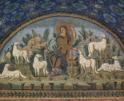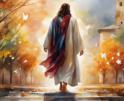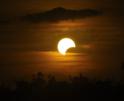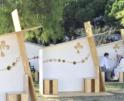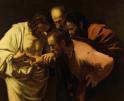
Faith
On this side of heaven, we are never closer to the Lord that when we've just received him in the Eucharist.
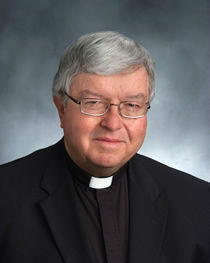
Doyle
Q. When is it proper to leave church at the end of Mass? Do you have to stay for the recessional hymn to end, or can we leave after the blessing, while the recessional is still being sung? (city and state withheld)
A. You should remain in church while the recessional hymn is being sung. Singing is a part of worship -- particularly so if it is a hymn meant to be sung by the entire congregation.
It bothers me when I see people leaving church early -- sometimes, alas, even right after Communion -- in a rush to get to the parking lot.
What's the urgency, I think, and isn't God worth the extra few minutes? I have read -- and I understand -- that technically the Mass finishes when the priest blesses us and the deacon or priest tells us that the Mass is ended.
But for the sake of simple politeness, one ought not distract others in the congregation by leaving before communal worship is concluded.
I find it helpful if the priest remains at the altar for the first verse or two of the recessional hymn and structures it so that the procession of liturgical ministers reaches the back of church as that hymn is ending.
Ideally, of course, worshippers would then spend a few minutes in private, silent prayer of thanksgiving before leaving church.
On this side of heaven, we are never closer to the Lord that when we've just received him in the Eucharist.
Q. Where did the Ascension take place? Matthew and Mark tell us that the apostles are to go back to Galilee, but Luke says that they should stay in Jerusalem until Jesus has risen. (Louisville, Kentucky)
A. On the top of the Mount of Olives outside of Jerusalem's Old City is a small hexagonal chapel that commemorates the site of the ascension of Jesus.
St. Luke narrates in the Acts of the Apostles how the disciples gathered with Jesus and "as they were looking on, he was lifted up and a cloud took him out of their sight." Then, Luke notes, "they returned to Jerusalem from the mount called Olivet, which is near Jerusalem, a sabbath's journey away" (Acts 1:9-12).
In the weeks following his rising from the dead, Jesus appeared to the apostles and disciples on a number of occasions, both in Jerusalem and in Galilee.
On Easter itself, he appeared to Mary Magdalene, to the women at the tomb, to Peter, to the two disciples on the road to Emmaus and to the 10 apostles in Jerusalem (when Thomas was not present).
A week later, when Thomas was with them, he appeared again to the apostles in Jerusalem. Later, he appeared to seven disciples as they were fishing near the shore of the Sea of Tiberias (Jn 21:1) and to 11 disciples on a mountain in Galilee (Mt 28:16).
The ascension marks the final departure of Jesus for heaven following this series of apparitions. From then on, the disciples were to live by faith and communicate with Jesus through prayer and the sacraments.
As the Catechism of the Catholic Church (No. 659) explains the sequence, "Christ's body was glorified at the moment of his resurrection, as proved by the new and supernatural properties it subsequently and permanently enjoys.
"But during the 40 days when he eats and drinks familiarly with his disciples and teaches them about the kingdom, his glory remains veiled under the appearance of ordinary humanity.
"Jesus' final apparition ends with the irreversible entry of his humanity into divine glory, symbolized by the cloud and by heaven, where he is seated from that time forward at God's right hand."
- Father Kenneth Doyle is a columnist for Catholic News Service
Recent articles in the Faith & Family section
-
Scripture Reflection for April 21, 2024, Fourth Sunday of EasterJem Sullivan
-
The new Temple: How Easter changes religionDr. R. Jared Staudt
-
The wonder of Ordinary TimeLucia A. Silecchia
-
Is there still responsibility for past sins after confession?Jenna Marie Cooper
-
Wounds, not scarsJaymie Stuart Wolfe

